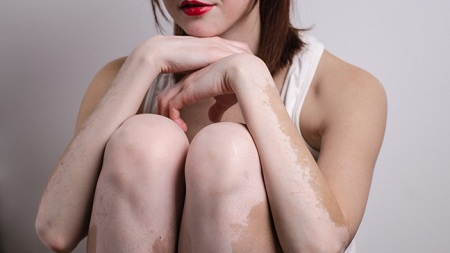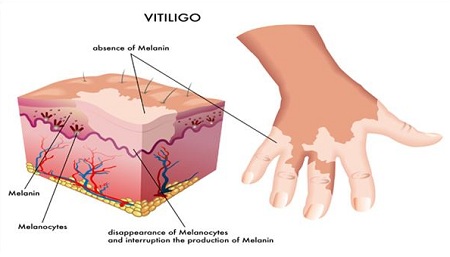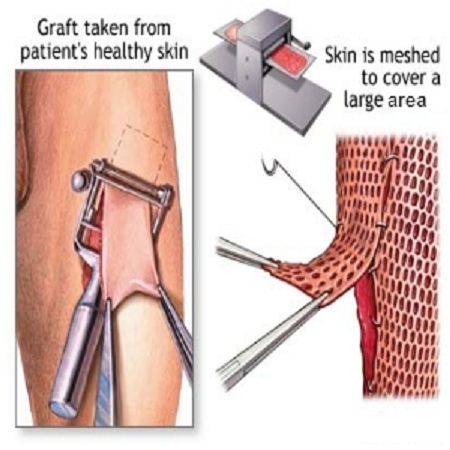"Vitiligo is a blessing in disguise"-Details of its Causes, Symptoms, and Treatment

Vitiligo is a long-term skin condition characterized by patches of the skin losing pigment. The extent and rate of color loss from vitiligo are unpredictable. It can also affect hair and inner part of the mouth.
Vitiligo is a skin condition characterized by patches of the skin losing pigment. This happens because the cells named melanocytes which makes pigment in the skin are destroyed. It can also affect the tissue inside the mouth, nose, and eye.
The condition can affect people of any age or ethnic group, however, the condition can develop prior to age 40; about half develop it before age 20.
What Is Vitiligo?
Vitiligo is a long-term skin problem in which growing skin lose their color.
The patches appear on the skin when melanocytes within the skin die off.

Melanocytes are the cells present on the surface of skin responsible for producing the skin pigment, melanin which provides a natural color to the skin and protects it from the harmful UV rays.
Globally, it appears to affect between 0.5 and 2 percent of people.
Some Facts About Vitiligo
- Vitiligo may be localized to a specific area, or the condition may affect several areas of the body.
- The exact cause of vitiligo is still unknown but most experts believe that it is an autoimmune condition in which body's immune system mistakenly attacks and destroys certain cells in the body.
- It may possess genetic component; the condition tends to run in families.
- The condition is not painful but the victim can, however, suffer emotional and psychological consequences.
- There are no proven home remedies to cure vitiligo; use of sunscreens, as well as makeup to cover the affected parts, can improve the appearance.
What Causes Vitiligo?
The exact cause of vitiligo is still not known, however, some researchers stated that it may be an autoimmune disease.
The disease happens when your own immune system mistakenly attacks and destroys own cells in the body.

It is also possible that one or more genes may make an individual more likely to get the disorder.
Some researchers assume that the melanocytes destroy on their own, whereas some think that a single event like sunburn or emotional distress may be responsible for vitiligo.
Signs And Symptoms
The appearance of white patches on the skin surface is the main sign of vitiligo. The uneven skin patches are most common in areas where the skin is exposed to the direct sun rays.

The patches may appear on the hands, legs, face, arms, and lips. The patches are irregular in shape. The edges of the patches can become reddish in color because of itchiness.
Some common areas of the white patches are:
- Armpits and groin
- Around the mouth
- Eyes
- Nostrils
- Navel
- Rectal areas
- Genitals
People suffering from the issue often have their hair turning gray too early. Those with dark skin may notice a loss of color inside their mouths.
Diagnosis And Treatment
The doctor usually makes a diagnosis of vitiligo by looking at your skin during a physical examination.
The doctor will do a physical examination and the test includes:
- Taking a small sample of the affected part of the skin
- Blood tests
- Eye examination
The way to prevent and cure the condition is still not known, however, the appearance of the affected portion of the skin can be improved using cosmetics and corticosteroid creams.

The American Academy of Dermatology (ADD) describe the condition as 'more than a cosmetic problem'. It is one of the health issues that require medical attention.
No drug can stop the process of vitiligo but some drugs with light therapy can help restore the skin tone.
Some treatment measures for vitiligo are:
- Application of a corticosteroid cream that controls inflammation.
- Ointments containing tacrolimus or pimecrolimus can be effective for people having depigmentation in small areas of the skin.
- Surgery may be an option if light therapy isn't effective. You can go with skin grafting, blister grafting or tattooing.
As melanin protects the skin from sun exposure, people with vitiligo have are vulnerable to skin issues due to direct sun rays.
Well, to protect the skin from direct sun rays as well as some artificial forms of light, apply sunscreen containing SPF 30; reapply it repeatedly after sweating or swimming.
Wearing protective clothing and sunglasses can keep you away from possible skin damages. Counseling and support also play a key role in dealing with possible hazards of vitiligo.
